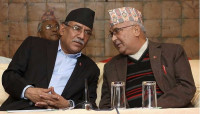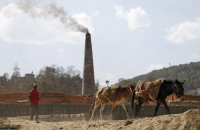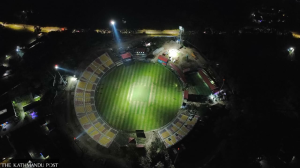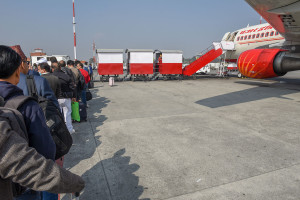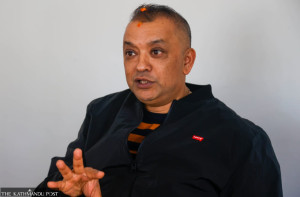Opinion
Into thin air
Urgent steps are required to stem electric power transmission and distribution losses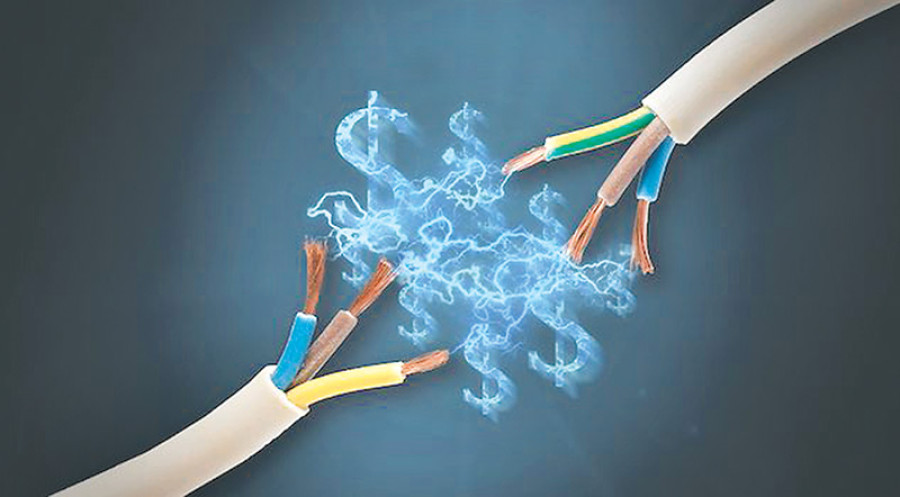
Sagar Gnawali
The Nepal Electricity Authority (NEA) is solely in charge of generation, transmission and distribution of electricity in Nepal, and so its efficiency, or lack of it, has a considerable impact on the national economy. The state-owned power utility, which celebrated its 32nd birthday recently, is the largest consumer of electricity in the country, considering the amount lost in transmission and distribution.
As per the NEA’s 2017 annual report, transmission and distribution losses amounted to 23.71 percent of output, down from 25 percent in the previous year. In the last fiscal year, 6,257.73 GWh of energy was available in the national grid, out of which 4,776.53 GWh was sold. This means 1,481 GWh of energy was lost in transmission and distribution, which is worth Rs14.83 billion at current tariff rates. The NEA’s total sales revenue came to Rs47.73 billion. What this means is that high electricity loss is also a major reason for the NEA’s poor financial status.
Minimise loss
Technical losses are related to energy lost as it passes through transmission lines, transformers and other equipment. Non-technical losses refer to faulty meter reading and billing and power theft. Technical losses can be reduced only to a certain level, but non-technical losses can be brought down sharply through better management. Some of the steps are creating a dedicated staff, stronger legislation to prevent power theft, loss-level based tariff rate, loss monitoring and audit committee, employee capacity building programmes, engagement of local groups, third-party monitoring bodies, replacement of defective meters, network strengthening like segregation of rural feeders and implementation of high voltage distribution system. Likewise, soft initiatives include consumer communication on loss reduction, customer feedback programmes and transformer management systems.
Many electricity distribution companies in the world are working to minimise technical losses by implementing system reform and upgradation, load balancing in the distribution system, network reconfiguration, distribution transformer management and power factor improvement. This has an exceptional effect on technical loss reduction. Similarly, in order to cut non-technical losses, efforts like better energy accounting, replacing old and defective meters with smart meters, spot billing, community campaigns, covered cables and remote sensing have been made. The NEA can learn from these effective initiatives to minimise its power losses.
Nepal’s hydropower plants are located in the northern region and load centres are mainly located in the southern region. One of the key reasons behind power loss in transmission is low voltage. Research conducted by the Institute of Engineering, Pulchok Campus has shown that optimum utilisation of sugar cogeneration can produce about 100 MW during the peak winter season with a 0.05 percent reduction in transmission losses in the national grid. This means about 5 MW of electricity can be saved through interconnection of cogeneration plants in the national grid, and 5 MW power generation is equivalent to 5 MW power saving. Power saving or efficiency improvement is a less expensive solution compared to building power generation plants.
Intervention measures
The NEA is preparing to install solar plants with a combined capacity of 25 MW next to some of its hydropower plants. There will be losses in transmission when this power is evacuated to major load centres. Such plants could be installed near major substations in load centre areas so that power losses can be minimised substantially. Solar plants can be installed in the Kulekhani area where the hydropower plant is not operated in the daytime. The water in the reservoir can be saved and power evacuation will be easy.
Many rural distribution feeders have problems associated with high energy losses, voltage regulation, frequent interruptions in power supply and overloading. Optimal placement and sizing of distributed generation (DG) will reduce system losses, improve the voltage profile within acceptable limits and increase the system reverse capability.
Recently, the NEA has approved net energy metering under which customers will be credited with the price of the extra energy they generate using solar photovoltaic home systems and feed into the grid. The project will be very effective in densely populated areas. This will also greatly help to minimise distribution losses in major load centres and large cities. Electricity loss is a big economic loss for the country. Reduction in distribution losses by a single percentage point can directly result in savings of more than Rs150 million annually. Therefore, it is urgent to implement smart technology intervention for electricity loss minimisation in Nepal.
Gnawali is a Power System Engineer at the Nepal Electricity Authority




 20.12°C Kathmandu
20.12°C Kathmandu

